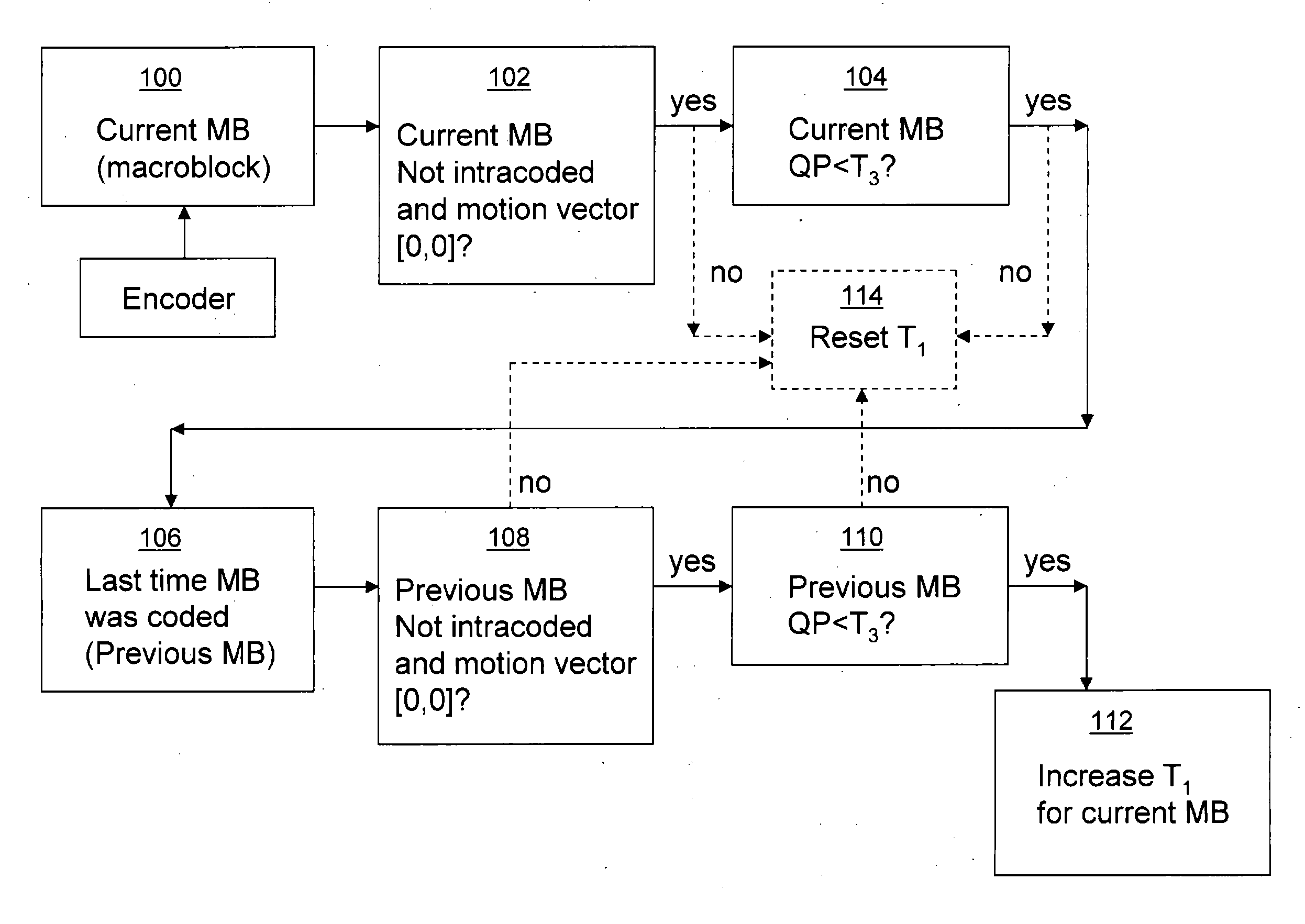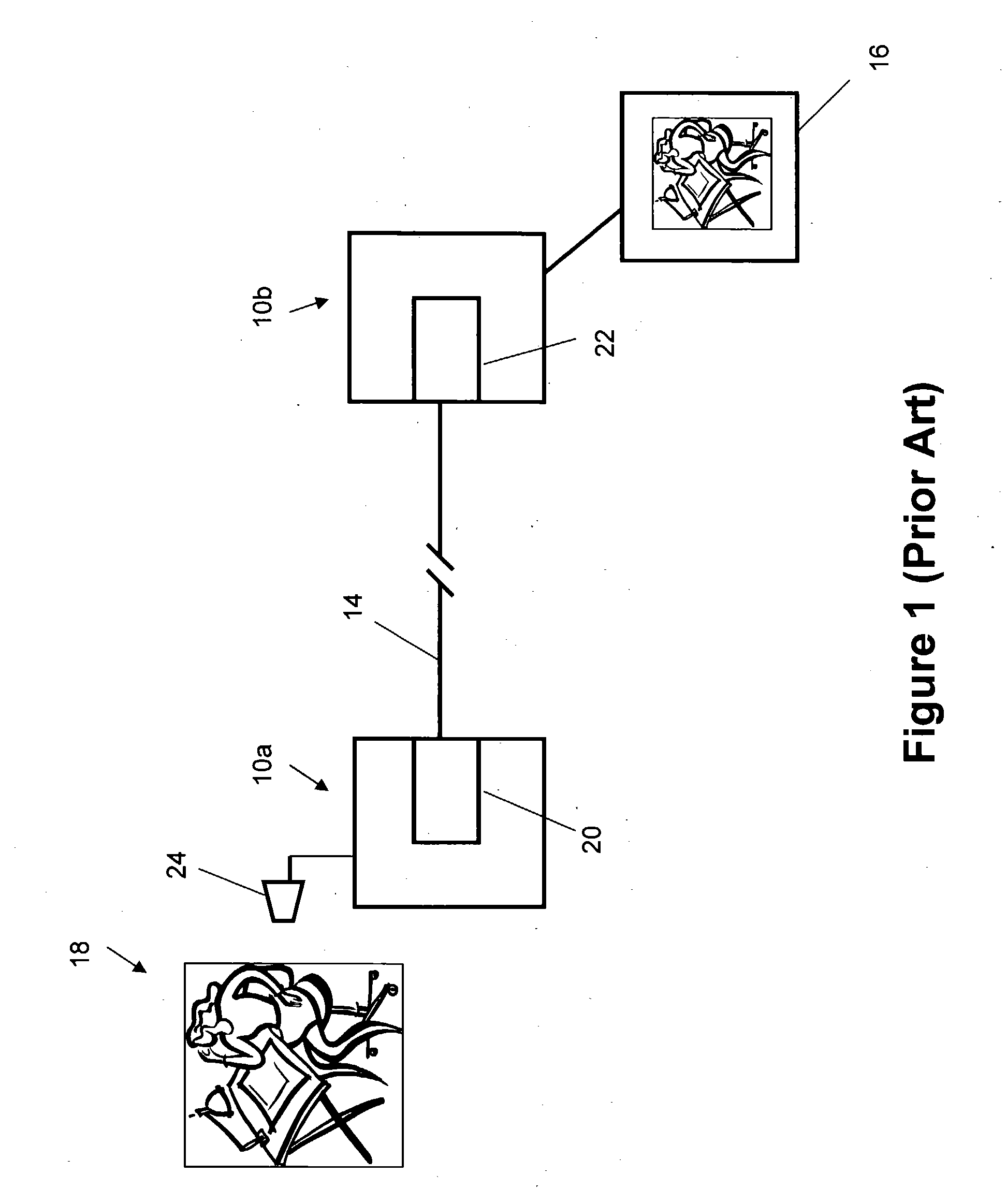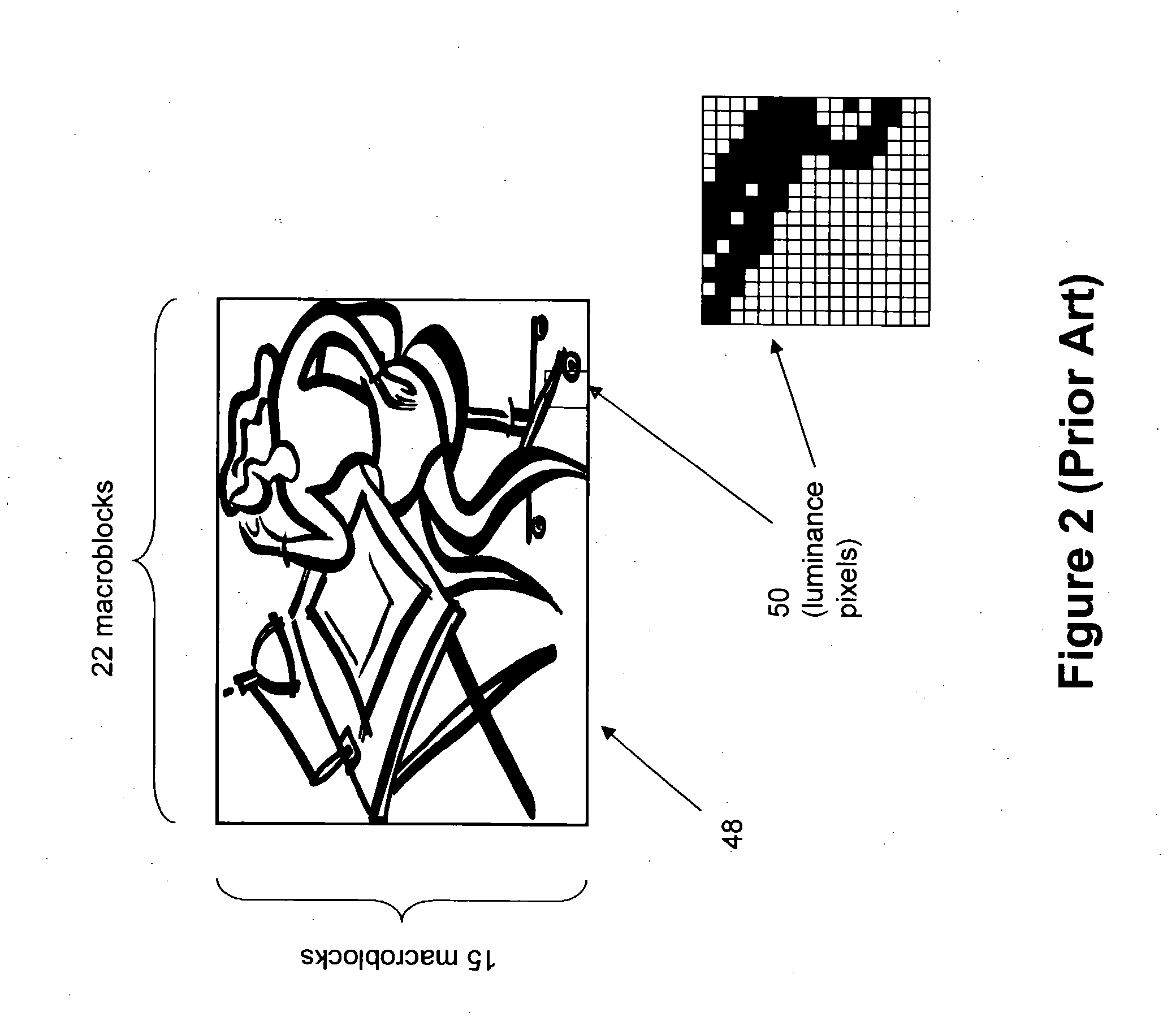Methods for encoding or decoding in a videoconference system to reduce problems associated with noisy image acquisition
a videoconference system and noise reduction technology, applied in the field of videoconferencing systems, can solve the problems of becoming more difficult to recode particular blocks, and achieve the effects of reducing the coding threshold (t1), preserving system bandwidth, and being less susceptible to erroneous recoding
- Summary
- Abstract
- Description
- Claims
- Application Information
AI Technical Summary
Benefits of technology
Problems solved by technology
Method used
Image
Examples
Embodiment Construction
[0017] In the interest of clarity, not all features of actual implementations of an adaptive coding threshold for a videoconference system are described in the disclosure that follows. It should be appreciated that in the development of any such actual implementation, as in any such project, numerous engineering and design decisions must be made to achieve the developers' specific goals, e.g., compliance with mechanical and business related constraints, which will vary from one implementation to another. While attention must necessarily be paid to proper engineering and design practices for the environment in question, it should be appreciated that the development of an adaptive coding threshold for a videoconference system would nevertheless be a routine undertaking for those of skill in the art given the details provided by this disclosure.
[0018] Referring to FIG. 2, and as is well known, images 48 in videoconference systems are typically parsed and processed in macroblocks 50, e...
PUM
 Login to View More
Login to View More Abstract
Description
Claims
Application Information
 Login to View More
Login to View More - R&D
- Intellectual Property
- Life Sciences
- Materials
- Tech Scout
- Unparalleled Data Quality
- Higher Quality Content
- 60% Fewer Hallucinations
Browse by: Latest US Patents, China's latest patents, Technical Efficacy Thesaurus, Application Domain, Technology Topic, Popular Technical Reports.
© 2025 PatSnap. All rights reserved.Legal|Privacy policy|Modern Slavery Act Transparency Statement|Sitemap|About US| Contact US: help@patsnap.com



